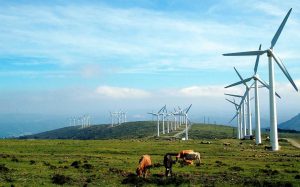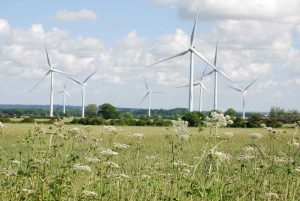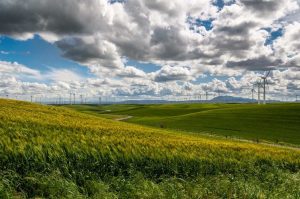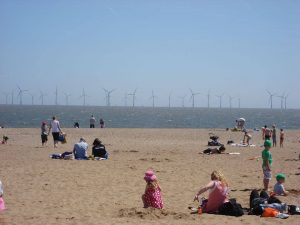Bastions of Corporate Greed
 It was my impression that the take up of renewable energy, sun, wind and water, would finally bring cheap energy to a population caught in an upward spiral of rising costs for a growing energy demand. Following the first ever wind farm in New Hampshire in 1980 By 2014, 214,000 wjnd turbines were operating providing around 4% of the world’s electricity. It felt good. Like cheap energy for all was just around the corner.
It was my impression that the take up of renewable energy, sun, wind and water, would finally bring cheap energy to a population caught in an upward spiral of rising costs for a growing energy demand. Following the first ever wind farm in New Hampshire in 1980 By 2014, 214,000 wjnd turbines were operating providing around 4% of the world’s electricity. It felt good. Like cheap energy for all was just around the corner.
 It seems now, only 8 years on, that the opposite it true. Energy companies, like other areas of need such as food, health, education and training, have taken full advantage of the price cap rise and the subsequest increase in the price of electricity and gas, answerable only to shareholders and focussed entirely on profit. Energy now is more expensive than it has ever been. The elderly shuffle into one room for the bitter Winters we now experience due to a nonchalant attitude over the past 60 years for climate change and the effect of carbon emissions into the atmosphere. Energy, like all the essential needs for life, has become, prohibitively expensive, and while energy corporations make massive profits, people die!
It seems now, only 8 years on, that the opposite it true. Energy companies, like other areas of need such as food, health, education and training, have taken full advantage of the price cap rise and the subsequest increase in the price of electricity and gas, answerable only to shareholders and focussed entirely on profit. Energy now is more expensive than it has ever been. The elderly shuffle into one room for the bitter Winters we now experience due to a nonchalant attitude over the past 60 years for climate change and the effect of carbon emissions into the atmosphere. Energy, like all the essential needs for life, has become, prohibitively expensive, and while energy corporations make massive profits, people die!
 These wind farms are not always serving any particular community. More and more wind farms are privately owned by companies collecting huge cheques from the energy suppliers for the generated surplus.
These wind farms are not always serving any particular community. More and more wind farms are privately owned by companies collecting huge cheques from the energy suppliers for the generated surplus.
 It is a mystery to me that the price of energy in the home keeps rising! Perhaps I am being naive, but renewable means, it’s never going to run out, right? Throw up a turbine and you can enjoy infinite free energy bar a few maintenance costs. The big six energy companies are making over a billion in profit year on year.
It is a mystery to me that the price of energy in the home keeps rising! Perhaps I am being naive, but renewable means, it’s never going to run out, right? Throw up a turbine and you can enjoy infinite free energy bar a few maintenance costs. The big six energy companies are making over a billion in profit year on year.
When wind technology became accessible to the domestic market, a number of companies developed a small roof top turbine for family homes. Once fitted this would subsidise the existing supply, almost instantly making individual energy costs much cheaper. This was quoshed by the government who, through local councils, announced that rooftop wind turbines would incur an increase in council tax. That was the end of the domestic market.  All turbine technology and infrastructure became the exclusive and unfettered development of the large energy companies and others whose sole interest is profit.
All turbine technology and infrastructure became the exclusive and unfettered development of the large energy companies and others whose sole interest is profit.
Now they are everywhere. Invasive, ugly, monstrous giants speckling not just the countryside, where remoteness and natural habitat are sacrosanct, but offshore. Often now, from our favorite beaches we see them in the distance, the lofty beacons, symbols, not of new found individual prosperity through low cost energy, but bastions of corporate greed that pay lip service to serving our needs.
Apparently, offshore wind installations in European waters hit a record level last year, with turbines becoming increasingly larger, covering greater areas of water, often seen from beaches previously enjoyed by thousands of summer visitors. WindEurope have said that Britain is responsible for almost half of the new capacity. Is this really something we can be proud of?
